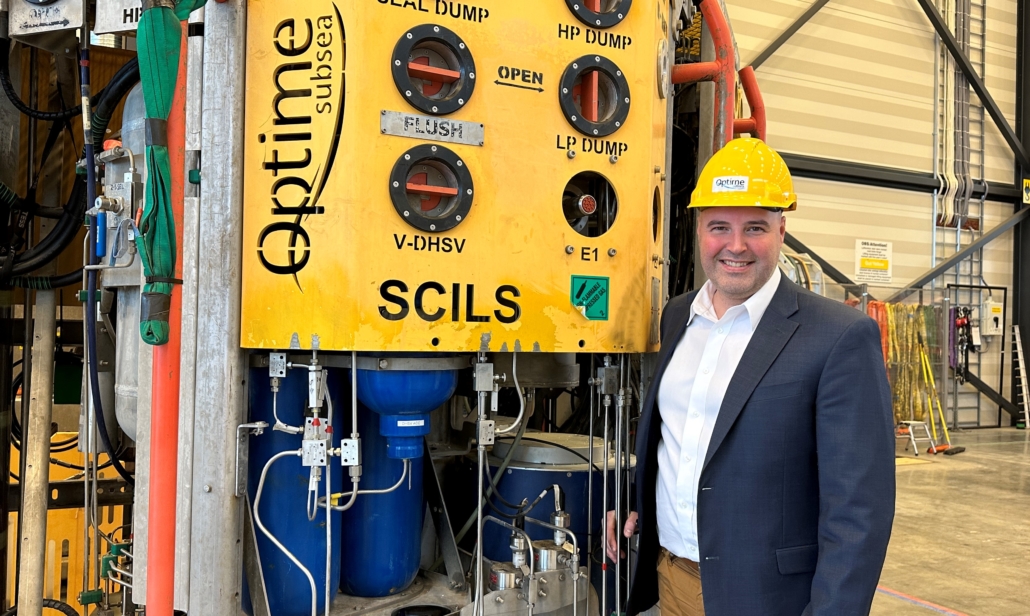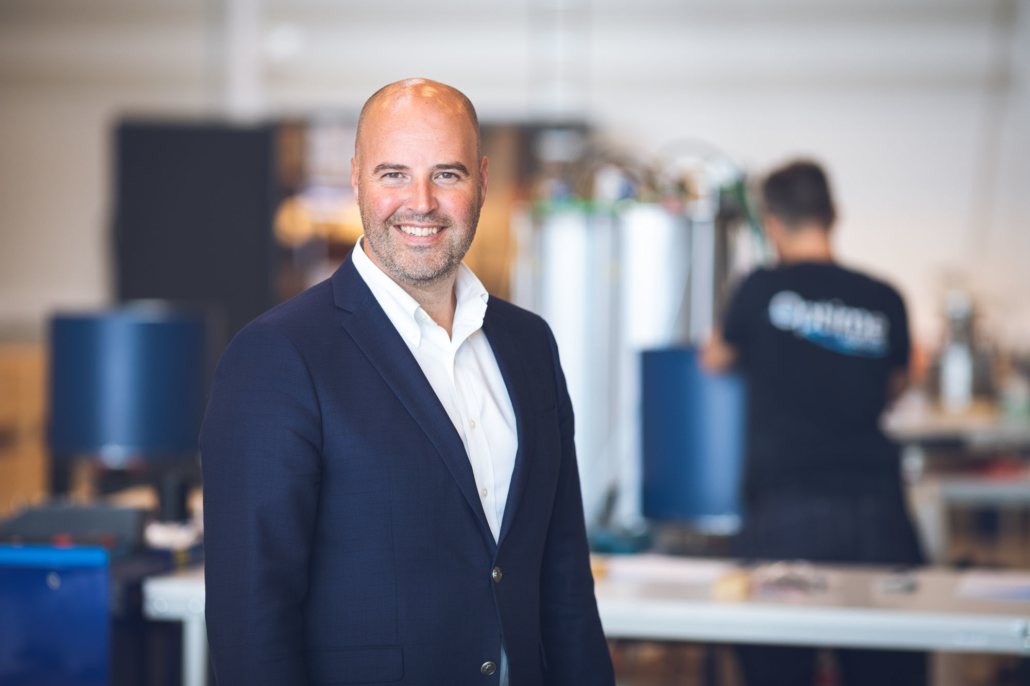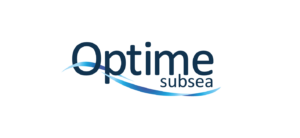23 February 2023 – Optime Subsea signed a long-term framework agreement with Wintershall Dea regarding rental of the technology company’s remote-controlled subsea well completion and intervention systems.
Under the scope of the agreement, Wintershall Dea will rent three Remotely Operated Controls System (ROCS) including its universal landing string system (panpipe), and two wireless electric subsea control and intervention systems (eSCILS) from Optime Subsea. The latter will also provide technical service personnel to support Wintershall Dea’s operations.
The framework agreement is valid for a firm period of three years plus two additional two-year options (3+2+2). If both option periods are exercised, Optime Subsea estimates that the contract could generate total revenues of around NOK 500 million.

Jan-Fredrik Carlsen, CEO of Optime Subsea.
“This contract manifests our position as the leading global supplier of
remote-controlled well completion and intervention systems. Our solutions are
tailored to simplify subsea, entailing less equipment offshore, lower weight,
less logistics, lower HSE risk, lower emissions and lower costs. We look
forward to supporting Wintershall Dea in achieving this,” says Jan-Fredrik
Carlsen, CEO at Optime Subsea.
Wintershall Dea will utilize the ROCS and eSCILS equipment at its operated fields on the Norwegian continental shelf.
ROCS and eSCILS
The ROCS is a fully battery-powered and umbilical-less system for well-completion operations. ROCS eliminates the need for the costly and heavy umbilical that normally runs from the topside to seabed to control the tubing hanger during completions, which also means that a large topside hydraulic unit is not required. In total, this avoids mobilization of approximately 50 tonnes of topside equipment. Further, ROCS is mobilized in a single basket, prepared and
made up onshore, allowing it to be ready to run immediately when offshore, from
a rig. In addition, the ROCS will be supplied with Optime Subsea’s universal landing string system (Panpipe), capable of being sheared and sealed on all its length.
The eSCILS is a battery-powered and umbilical-less subsea access device for well interventions and workover operations. eSCILS is lowered down to the seabed next to the well and can be connected to any type of subsea tree. A computer is all that is needed for a topside control system, no additional rig equipment is needed. With a footprint as little as 3,5 x 2,5 meters, eSCILS can be transported to and from the rig on a ship and be mobilized and demobilized in one day. As a result, operations can be done significantly safer, faster, and more cost-efficient than conventional solutions.Optime Subsea will manufacture all equipment at the company’s headquarter in Notodden, Norway.
10-system series
In 2022, Optime Subsea made an upfront three-figure NOK million investment to build ten similar ROCS systems. A North Sea operator ordered the first two systems, a West African operator the third, and now Wintershall Dea has secured the next three.
“The decision to make such a large upfront investment was based on our market position and interest received from operators globally, plus an attempt to manage supply chain constraints. Looking back, it was obviously an ambitious but smart decision. We expect to close contracts for the remaining four systems during the next six months,” adds Jan-Fredrik Carlsen.
Optime Subsea has offices in Notodden, Norway, and Houston, Texas. Over the past five years, the company has established itself as a leading specialist on subsea intervention and controls systems globally.
For further media information, please contact:
Anneli Stenman, Marketing & Communications manager | Optime Subsea AS, e-mail: as@optimesubsea.no | Tel: +47 906 35 305.
29 June 2022 – Aker BP has contracted Optime Subsea to deliver two Remotely Operated Controls Systems (ROCS).
In February last year, Aker BP completed its first subsea well completion operation using ROCS on the Ærfugl field. The company has since then successfully run the ROCS on six more wells, without any down time.
“Our own analyses show significant benefits of applying the ROCS instead of a traditional system when completing subsea wells. We have reduced our operating time, hence reducing the weather window requirement, we see less HSE exposure on the drill floor, have lowered our CO2 footprint and through digitalization we have removed 45 tons of surface equipment. In sum a great simplification and improvement of our subsea operations, in line with our strategy,” says Mads Rødsjø, VP D&W Operations at Aker BP.
This has resulted in Aker BP ordering two new, second-generation ROCS from Optime through a period of three years, with additional two years as options.
The second-generation system will come with a new stand-alone communication system for even greater rig flexibility and efficient operations. In addition, both systems will be supplied with Optime`s new universal landing string system (Panpipe), capable of being sheared and sealed on all its length. In sum, this position Optime as a complete service provider in this segment.
Two out of ten
The Aker BP order follows Optime Subsea’s decision earlier this year to invest a three-figure NOK million amount in building ten similar ROCS systems.
“We know that our ROCS technology is a vehicle to significantly reduce operators’ costs and carbon footprint. The decision to make the upfront investment in ten systems was based on our market position and the interest received from operators globally, as well as global market disruptions including supply chain constraints. We are delighted that Aker BP, who has been crucial in the successful development and testing of ROCS, has placed an order for two systems,” says Jan-Fredrik Carlsen, CEO of Optime Subsea.

Time and cost saver
Optime Subsea’s ROCS eliminates the need for the costly and heavy umbilical that runs from the topside to seabed to control the tubing hanger during completions of subsea wells. More importantly, the ROCS limits the health and safety concerns using a large topside hydraulic unit, with risk of damaging personnel and environment.
“Our ROCS is 100 percent universal, with a proven track record in reducing cost as well as health, safety and the environmental risks. It can be utilized by any subsea field operator worldwide and immediately return these benefits to the operators,” adds Jan-Fredrik Carlsen.
Notodden, Norway
The equipment will be manufactured and assembled at Optime Subsea’s headquarter and main manufacturing site at Notodden, Norway, and then supplied to Aker BP in Norway.
Optime Subsea has not disclosed the value of the contract.
Optime Subsea has offices in Notodden, Norway, and Houston, Texas. Over the past five years, the company has established itself as a leading specialist on subsea intervention and controls systems globally.
ROCS details:
- When completing subsea wells, the tubing hanger is placed on top of the wellhead, as a seal towards the rest of the subsea well.
- Normally the tubing hanger is controlled through a dedicated hydraulic umbilical which adds a large 20-30 feet control container. When running the umbilical, it is also clamped to the tubing for increased stability.
- ROCS replaces these operations by remotely controlling a controls unit toward the wellhead. This allows for safer, simpler and more efficient operations.
- ROCS is mobilized in a single basket, prepared and made up onshore, allowing it to be ready to run immediately when offshore, from a rig. Avoiding mobilization of 50 ton + of topside equipment
(ENDS)
For additional information, please contact:
Gunn Tove Aarbakk, Business Development & Marketing, Optime Subsea, tel: +47 908 20 144, e-mail: gta@optimesubsea.com
A great success ROCS & ROLL at Optime Subsea 31.03.2022
Finally, it was time for getting together for a Workshop in the oil and gas industry, for Operators & Subsea innovators.
A great hands-on innovation workshop at Optime Subsea Notodden-Norway, an exciting day of shaping tomorrow’s systems that will simplify subsea.
Presentation of Optime Subsea systems and operations; ROCS, SCILS and mSHPU products.


Thank you all for making The ROCS & ROLL workshop at Notodden into an amazing event. Optime sets great pride in open and honest relationship with our customers and colleagues. The ROCS & ROLL event was a great hands-on workshop for getting good discussions and insight in equipment, innovation and customers need. Meeting together, participants from management-development-engineering to technical support personnel gave great value and insight. We hade a fantastic day and we are happy to say that we will make this event a yearly happening for the industry, colleagues and customers.
Jan-Fredrik Carlsen, CEO Optime Subsea









The speakers of the day!

Sigurd Loven Kirkebø, Deloitte
Presented benefits gained by working together.
Sigurd shared his experiences from the “NCS Sharing Economy Project” conducted for the Norwegian Oil and Gas industry. He also talked about the challenges and opportunities for operators and suppliers, as well as what benefits can be gained by collaborating on projects.

Magnus E Marsdal Author of the book, Parterapi For Oljefolk og klimaaktivister
Magnus introduced us to the topic: climate activist Anja Bakken Riise and oil union representative Atle Tranøy join forces to find Norway’s path forward through the industrial green shift.


Trond Løkka, Chief Business Development Officer Optime Subsea and Rubem Prandi, Business Development Engineer
Trond and Rubem talked about Optime Subsea systems and operations, the ROCS, SCILS and mSHPU products.
They discussed how to increase efficiency, reduce interfaces, and minimize HSE risk exposure. They also presented how Optime has investigate CO2 footprint reduction by way of universalizing systems and
maximizing utilization.

Aker BP’s Tor Otto Lidal, Lead Subsea Engineer, and
Hans Andreas Øygarden, Senior Subsea Engineer
From Drilling and Wells at Aker BP
Tor Otto and Hans Andreas shared their expertise on how new initiatives in the oil and gas industry can move from great ideas to field proven innovation, with the SCILS & ROCS products as reference examples.

Henrik Vedeld System Engineer Alle Electric Equinor
All-Electric Equinor
Henrik shared his knowledge and expertise on developing Optime’s mSHPU product to overcome the last hurtle in going all electric, and how the product was qualified to TRL-4 for subsea worthiness and use.


Karl Herman Franzen, Leading Engineer Subsea Technology TDI OG FOS SMT SUB Equinor
Technology qualification is a process, All Electric, mSHPU system.
Shared experience from 2 years of technology development and qualification at Optime Subsea under demanding frame conditions.


Reidar Tveiten, Chair of the Board, Optime Subsea
Announced latest news, how Optime Subsea will grow according to the marked position and strategy for the company.
More news to come.
A special thanks to our guest from; Aker BP, Equinor, Chevron, Petoro, Shell, Neptun Energy, OKEA, Repsol, Conoco Philips, DNO, Wintershalldae, Lundin, Vår Energy for participating.
Thanks to speakers for making an excellent program for the event. And a special thanks to speakers from Aker BP and Equinor, talking about their experience working with Optime Subsea. They referred to customer projects related to Optimes core values, technology development and Qualification.
The event ended with dinner at Brattrein Hotel and rock concert at Telerock




Thank you all for coming to Norway, Notodden. It was a great event, and we are proud to be able to work together for making the oil and gas industry focusing on developing new technology, to reach the future golds related to environment, HSE and sustainability. See you all back at Optime Subsea next year for a new ROCS & ROLL workshop at Notodden Norway
Host for the Rocs and Roll event, Gunn Tove Aarbakk, Business Development-Project Manager-Marketing Responsible
Photo: Elisabeth Fosse
Optime’s subsea system, Remotely Operated Controls System (ROCS) has completed a successful subsea operation for Aker BP. The ROCS eliminates the umbilical during well completions.
This is not just a first system use, but also a first type of operation for the industry.
ROCS was deployed during a completions operation for a production well for Aker BP on the Ærfugl-field on the Norwegian Contintental Shelf in late February.

-This is a major achievement! Optime has developed ROCS over several years and from looking at the total work hours available internally, we have spent a significant share of resources on this development.
Together with Aker BP we have now achieved success on the first operation offshore. I believe that is a great accomplishment and the start of a major industry transition with this system.
Jan-Fredrik Carlsen, CEO at Optime Subsea
ROCS Simplifies Operations
Through ROCS, Optime is contributing to increased efficiency for the oil and gas industry in numerous ways. ROCS is remotely:
- controlled topside,
- using an advanced technological controls unit providing improved functionality,
- without a large hydraulic system, including a costly and heavy umbilical.
– We have now completed a successful operation on the Ærfugl-field using Optimes ROCS. The operation was planned in great details, allowing for a safe execution. Imbedded in Aker BP is the continous drive towards technology that permanently improves our subsea well operations.
ROCS is a good example of that, as it reduces HSE risk, optimizes operations and also reduces the overall cost for us, says Mads Rødsjø, head of Aker BP’s subsea well operations.
Read the amazing story behind the SCILS and the creation of a unique company culture
-Through the use of ROCS we have been able to move tonnes of actual equipment from the rig, as well as mechanical and hydraulic interfaces, into a simple and efficient software. This is truly digitalization, says Rødsjø.
Optime signed a frame agreement with Aker BP January of 2019. The agreement includes work on Aker BPs subsea systems for two years, with an additional 2 year extension.

– Aker BP and their competence as well as focus to leverage innovative technology, is fundamental to continous industry improvements. This reduces the environmental footprint, improves efficiency, increases safety, and reduces cost – we believe it will create a new industry norm,
Jan-Fredrik Carlsen, CEO at Optime Subsea

About Optime Subsea
Optime Subsea is based with its HQ on Notodden, Norway as well as office in Houston, Texas. Over the last years it has established itself as a leading specialist on subsea intervention and controls systems globally.
Come work with us: We´re hiring like never before – Right now, we have 5 vacant positions
ROCS Facts
When completing subsea wells, the tubing hanger is placed on top of the well head, as a seal towards the rest of the subsea well.
- Normally this is controlled through a dedicated hydraulic umbilical which includes a large 20-30 feet control container. When running the umbilical, it is clamped to the tubing for increased stability.
- ROCS replaces the operation by remotely controlling a controls unit towards the well head. This allows for safer, simpler and more efficient operations
- ROCS is mobilized in a single basket and prepared and made up onshore, allowing it to be ready to run immediately offshore from a vessel or rig.
For additional information, please reach out to the following:
(Norwegian) Jan-Fredrik Carlsen, CEO Optime, cell: +47 414 60 996 , email: jfc@optimesubsea.com
(International) Thor-Arne Lovland, CCO Optime, cell: +1 832 904 6842, email: tal@optimesubsea.com









